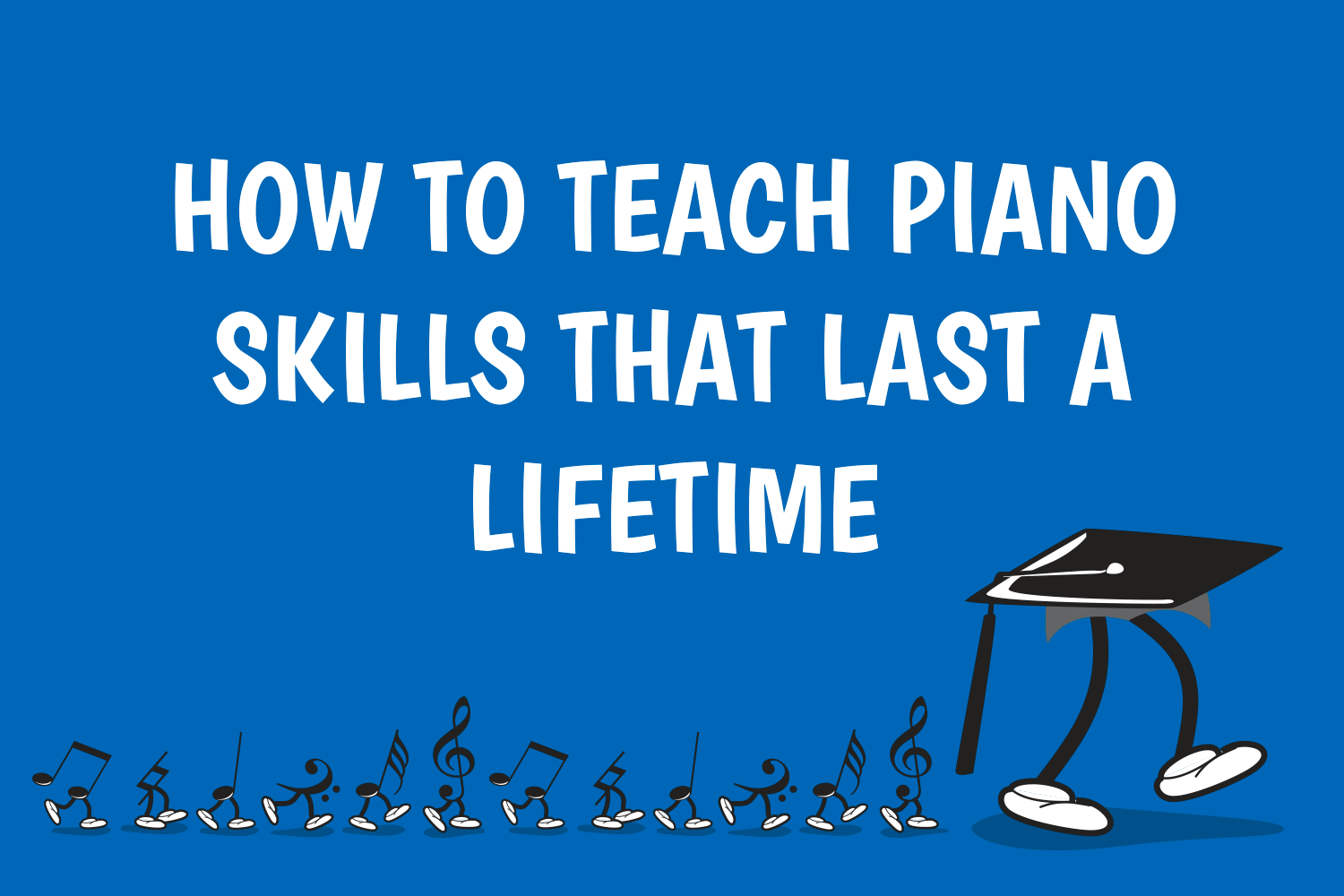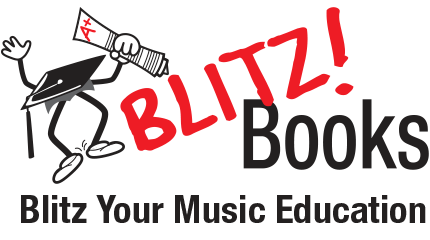How to Teach Piano Skills That Last a Lifetime

I know a lot of people who ‘used’ to play the piano. I have friends who learned as children, who can no longer play, but of course wish they could. Then there are the parents of many of my students, who also learned in their youth, and are now relearning along with their children, again wishing that they’d somehow kept up their skills a little more.
A much sadder situation, however, is when I meet a tween or teen or young adult, who only recently stopped lessons, who cannot play anything at all. Yes, they had practised hard, and had perhaps even reached a level bordering on virtuosic, yet just a few short months after that final piano exam they are somehow devoid of any piano skills.
When students practice a complex piece of music for an extended period, which is usually what they do, year after year, exam after exam, the skills they are developing are that of rehearsing and performing. There’s nothing wrong with this, it’s wonderful to have a practice discipline and it’s a great thing to have a performance goal to work towards!
But performance-readiness is like peak physical fitness: it must be maintained, or it disappears. 1 Eventually, piano lessons cease and practising stops, and all those carefully prepared and performed pieces simply fade away, leaving students with… nothing else. That’s because performing, in and of itself, does not develop any of the skills required for retaining long-term piano skills.
So, as teachers, what can we do about this? In my opinion there are three ways of playing that are essential for keeping piano skills for life.
- Play from FULL notation (i.e. know how to sight-read)
- Play from PARTIAL notation (i.e. be able to play from a chord chart)
- Play from NO notation (i.e. playing by ear, memorising, improvising, composing)
Full Notation
Learning a piece from full notation is how most of us experience piano. That complex arrangement of Moon River you learned a few years ago was a process of decoding, rehearsing and performing.
It’s important to remember, however, that practising a difficult piece for months and months is not a reading exercise, even if the music is in front of you. The ability to sight-read music well is a separate skill from performing, and must be practised separately, so that decoding music becomes an efficient and satisfying process.
The only way to become a proficient sight reader is to read different music all the time, and this is what I mean by developing the skill of reading from full notation. If you were a proficient sight reader in your youth, Moon River will be accessible to you, even if you haven’t played it for many years. You may be a little rusty, but you can relearn it by taking out the sheet music and reading it.
Partial Notation
‘Partial’ notation means music that is not fully realised in terms of notes on manuscript. It refers to lead sheets, melodies with chord symbols above, or sometimes jazz scores with instructions to improvise. Being able to read a lead sheet and create an accompaniment from chord symbols is, in my opinion, a skill that is just as essential as reading from full notation.
If that Moon River arrangement is perhaps just a little too complex to sight-read without a fair bit of effort, now you can simply source the chord chart and play it that way instead – which is much easier, and just as satisfying.
No Notation
Playing without any notation at all is a wonderful and extremely important thing to be able to do. Let’s face it, if an opportunity presents itself where you are asked to play piano on the spot, for example at someone’s house, there is usually no notation around!
There are three types of playing without any notation at all:
- Playing a piece from memory (that has been learned from full notation). My mantra with my students is that they will play BETTER when they play from memory, because more energy can be devoted to listening!
- Playing a piece by ear i.e. trying to nut out that same version of Moon River you learned many years ago but no longer have the music for, or perhaps just trying out any other songs you are enjoying listening to.
- Improvising/composing, i.e. simply making up your own original music.
All three of these are an extremely important part of a holistic music education and should be developed from an early age.
My mission, in my teaching, is to instil my students with recreational music making skills. I want them to revel in their piano playing when they are older – with no assessments, no exams, no judgment – just pure enjoyment of music.
So, next time you are planning a lesson, perhaps you can think about how you can include activities that involve these three concepts. If students are taught to play from all three types of notation – full, partial, and no notation at all – music remains accessible long after lessons have ceased, and it sets them up to be able to take their music into adulthood. Isn’t that what it’s all about?

Yes! This! Thank you so much for this wisdom. 😊
I too have been thinking along similar lines, discussing with my advanced students how to maintain repertoire that’s been learnt, to play in the future. There’s little or no teaching on this that I’ve ever seen. How do concert pianists do it? How often does something have to be revisited? Once a month? Or once a fortnight? It’s a fascinating subject.
Indeed it is Tania!
I have two students who did grade 6 piano for Leisure last year. They are in year 11 and not doing music as one of their subjects. They both have students of their own, so I am teaching them how to ‘teach’ by taking them through programmes in Preliminary and grade 1 right now. This gives them a goal which is not too difficult given their other commitments. They are going to present their work to another piano teacher who will write a report. It is easy to remember your 3 points … full, part and no … notation. We try and do that too … but your words make it easy to remember what to do and what they should be doing with their students.
Thanks Roslyn! It’s terrific that you are mentoring these young teachers. 🙂
My big “thing” is teaching chords, their inversions and the I IV V7 for each key. I try to fit in to each lesson the sight-reading of the melody with the chord bass. This isn’t always possible, of course, with only a half hour to do all the other necessary parts of the lesson. I would be happy if all my students could read songs with a chord chart when they stop coming to lessons.
I have ‘discovered’ your Sight Reading programme and am finding it very successful and comprehensive, covering all skills of reading. Thank you for an excellent publication. I am now coupling this with the Blitz Theory skills and finding they complement each other. Thank you very much. Sadly I am coming towards the ending of my teaching career, but do look forward to your regular messages.
Thank you for your extremely encouraging words Margaret!
I love seeing students pull up the chords for a favourite song and nut out how to play it using the chords or just listen and use their ear to play it. Skills I never learnt myself. How music teaching has changed!
Totally agree Mary!
Bookmarked your website for easy access! These articles are great
Pingback: The Best Gifts For Piano Teachers of 2021 | Unbelievable Gifts!